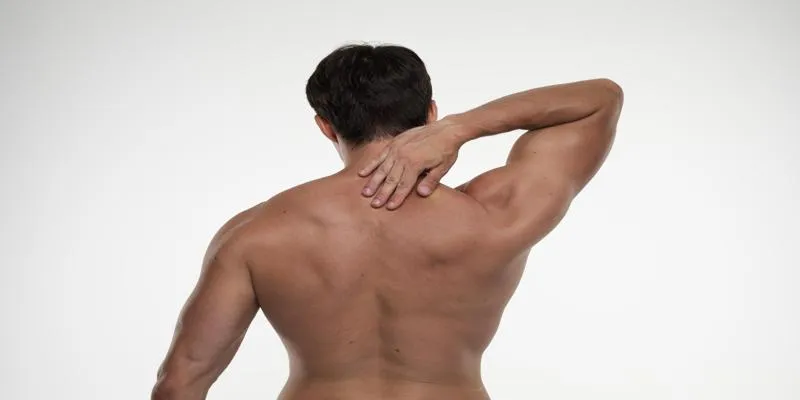What Is Upper Crossed Syndrome?
Do you often find yourself slouching at your desk? You’re not alone. Welcome to the world of Upper Crossed Syndrome (UCS), a prevalent postural issue in our tech-driven society. If you experience neck pain, headaches, or shoulder discomfort, UCS might be the culprit. Don’t worry—you’re about to discover what UCS is, why it happens, and how you can overcome it. Sit up straight and join us as we explore the intricacies of Upper Crossed Syndrome.
What is Upper Crossed Syndrome?
Upper Crossed Syndrome (UCS) is a common postural condition affecting many individuals, often without their realization. It’s like a tug-of-war within your upper body, with no clear winner.
The Telltale Signs
Imagine this: shoulders rolled forward, head jutting out, and a slightly hunched upper back. Does this sound familiar? This is UCS in a nutshell—like invisible strings pulling your head forward and shoulders inward.
The Muscle Imbalance Issue
UCS results from muscle imbalances. Some muscles become overly tight, while others weaken and stretch. It’s like a seesaw stuck in an uneven position.
- Tight muscles
- Weak muscles
The Modern Lifestyle Culprit
Our modern lifestyle is largely to blame for UCS. Spending hours hunched over desks, staring at screens, or scrolling through your phone can lead to this postural problem. Your body struggles to adapt to such unnatural positions, which can be detrimental over time.
Common Causes and Symptoms of Upper Crossed Syndrome

Lifestyle Factors Leading to UCS
Your daily habits significantly contribute to Upper Crossed Syndrome. Prolonged sitting, especially with poor posture, is a primary cause. How many hours do you spend hunched over your desk or slumped over your smartphone? These positions tighten the chest and upper back muscles while weakening the neck flexors and upper back muscles.
Telltale Signs You Shouldn’t Ignore
UCS doesn’t develop overnight. Its symptoms are subtle and often ignored. Be aware of the following indicators:
- Hunched shoulders and head-forward posture
- Neck pain or stiffness, especially after extended sitting
- Headaches, particularly at the base of the skull
- Pain in the upper back or persistent tightness between the shoulder blades
- Reduced mobility in the neck and shoulders
The Muscle Imbalance Behind UCS
UCS involves muscle imbalances: some muscles tighten and become overactive, while others weaken and lengthen. These imbalances disrupt upper body alignment, and addressing them is key to effective treatment.
How to Diagnose Upper Crossed Syndrome
Diagnosing UCS typically involves visual assessments and physical examinations. If you suspect UCS, understanding the diagnostic process is helpful.
Visual Assessment
The first step in diagnosing UCS is often a visual evaluation. If you view yourself from the back, look for these signs:
- Forward head position
- Rounded shoulders
- Increased curvature in the upper back (kyphosis)
- Elevated and protracted shoulder blades
Physical Examination
A physiotherapist or chiropractor will conduct a thorough physical exam, which may include:
- Range of motion tests for the neck and shoulders
- Muscle strength assessments, particularly of the upper back and neck muscles
- Palpation of tight or tender areas in the chest and upper trapezius
Additional Diagnostic Tools
In some cases, additional tests may be necessary:
- X-rays to examine spinal curvature
- MRI scans to rule out structural issues
- EMG studies to assess muscle activity patterns
Treatment Options for Upper Crossed Syndrome

Treating Upper Crossed Syndrome involves effective strategies to alleviate pain and correct posture. Let’s explore some common approaches:
Physical Therapy
A skilled therapist will guide you through exercises to strengthen weak muscles and stretch tight ones. They may focus on:
- Exercises for deep neck flexors and lower trapezius
- Stretches for chest muscles and upper trapezius
Chiropractic Care
Chiropractic adjustments can help realign the spine, improve joint mobility, and reduce pain, ultimately enhancing posture.
Ergonomic Modifications
Adjusting your workspace can prevent further strain:
- Position your computer screen at eye level
- Use a supportive chair to promote good posture
- Take regular breaks to stretch and move around
Self-Care Techniques
Don’t underestimate the power of self-care! Regular stretching, using a foam roller, and practicing yoga can significantly manage UCS symptoms and improve posture.
Preventing and Managing Upper Crossed Syndrome
Upper Crossed Syndrome doesn’t have to be a persistent issue. Simple lifestyle changes and targeted exercises can help you avoid this postural problem. Here’s how to tackle UCS:
Stretch It Out
Gently stretch your chest, neck, and shoulders to release tight muscles. Incorporate doorway stretches and cat-cow stretches to enhance upper body flexibility.
Strengthen Your Core
A strong core is your secret weapon against UCS. Exercises like planks, bird dogs, and rows target essential muscles. Remember, a strong trunk supports good posture.
Mindful Movement
Be mindful of your posture throughout the day, whether at home, in the office, or on the go. Regularly check for slouching and correct your posture. Initially, it may feel awkward, but soon it will become second nature.
In Summary
In simple terms, UCS is a postural imbalance that can be corrected. The good news? You don’t have to endure it. With a few easy stretches and strengthening exercises, you can say goodbye to rounded shoulders and forward head posture.




